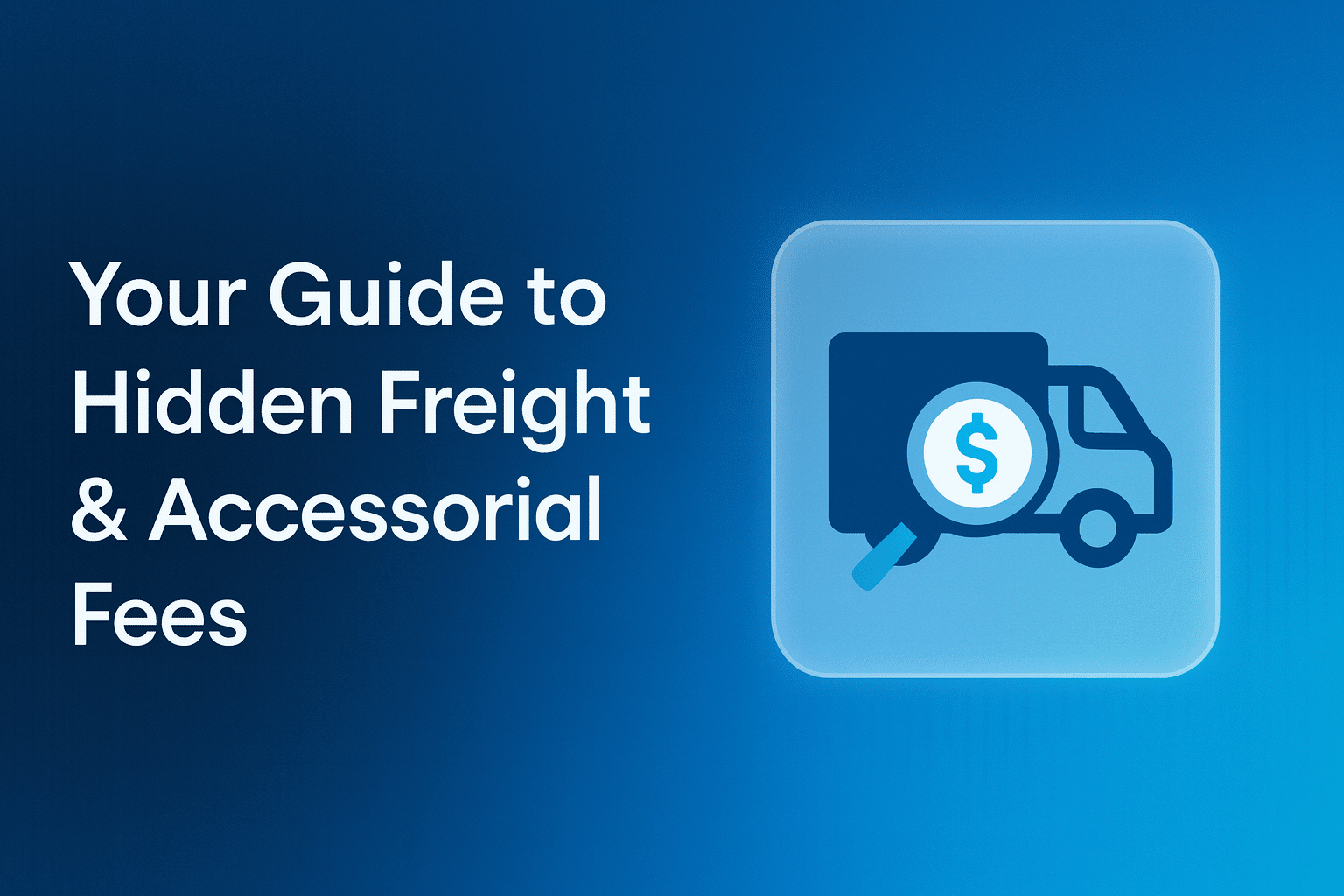Duty drawback allows businesses to get refunds on customs duties, taxes, and fees paid on imported goods that they eventually export or destroy. Especially with fluctuating global trade policies and tariffs, an effective duty drawback program is no longer just a bonus—it’s a critical component of a resilient supply chain strategy. This practice can drastically reduce costs and increase profitability, improving your bottom line.
In this article, we’ll explore what duty drawback is, how it works, and the different types available that can benefit your business.
Key Takeaways
- Duty drawback lets you recover up to 99% of customs duties and fees paid on imported goods when they are exported or destroyed to optimize operational costs.
- Different duty drawback programs, such as manufacturing, substitution, and unused merchandise drawback, cater to various business needs and promote domestic production and exportation.
- Compliance with documentation and regulatory requirements is crucial for reclaiming duties, making it important to use professional duty drawback services that enhance accuracy and streamline the filing process.
What Is Duty Drawback?
Duty drawback is the reimbursement of specific duties, taxes, and fees paid on imported goods, which can be claimed back when those goods are either exported or destroyed. By recovering a significant portion of these initial costs, companies can effectively reduce the cost of their imports.
The concept of duty drawback has been around since the Tariff Act of 1789, but the program has undergone various amendments over the years to adapt to changing trade environments and economic needs. Today, it serves as a crucial financial tool for exporters, importers, and manufacturers to optimize their operational costs.
The Importance of Duty Drawback
The core value of duty drawback programs is that it can help you recover up to 99% of the customs duties, taxes, and fees you pay on imported goods. These substantial savings can significantly enhance profitability, particularly for manufacturers and importers who deal with high volumes of international trade where saving a few percent on costs can really add up.
In recent years, navigating volatile global trade dynamics, including Section 301 tariffs and evolving trade agreements like the USMCA, has made duty drawback more crucial than ever. It offers a vital mechanism for companies to mitigate the costs of these tariffs and remain competitive.
Furthermore, with increased regulatory focus from CBP, maintaining a compliant and efficient drawback program is a key component of a resilient supply chain strategy.
What Are The Types of Duty Drawback Programs?
Duty drawback programs are designed to cater to different business needs and scenarios.
The main types of duty drawback programs include manufacturing, substitution, and unused merchandise. The table below provides a quick comparison.
| Drawback Program | Common Use Case | Key Requirement | Simple Example |
| Manufacturing | Imported materials are used to produce a new article that is then exported. | Must provide production records to trace imported materials to the final exported product. | “A company imports electronic chips, uses them to assemble laptops, and exports the finished laptops.” |
| Substitution | Exporting goods that are commercially interchangeable with imported goods. | The imported and exported goods must have the same 8-digit HTSUS classification. | A company imports French wine and also exports Californian wine of the same classification. They can claim drawback on the imported wine. |
| Unused Merchandise | Exporting imported goods that were never used in the U.S. | The goods must be exported in the same condition as they were imported. | “A distributor imports 1,000 sweaters, sells 800 domestically, and exports the remaining 200 to another country.” |
Manufacturing Drawback
This program is ideal for companies that import materials to produce goods that are then exported.
- Who it’s for: Manufacturers using imported components.
- Benefit: Recovers up to 99% of duties on imported materials used in the final exported product.
- Requirement: Meticulous tracking to prove that the imported goods were used in the exported articles.
Substitution Drawback
This program allows companies to recover duties on imported goods that are replaced with similar domestic or imported products of the same 8-digit HTSUS classification.
- Who it’s for: Companies that import and export commercially interchangeable goods.
- Benefit: Provides flexibility by not requiring direct tracing of the exact imported item to the exact exported item.
- Requirement: Proof that the substituted goods are commercially interchangeable with the imported goods.
Unused Merchandise Drawback
This program is for businesses that import products but later export them in the same, unused condition.
- Who it’s for: Distributors, wholesalers, or companies dealing with surplus inventory.
- Benefit: Recovers duties on products that do not enter the U.S. market.
- Requirement: The exported goods must be in essentially the same condition as when they were imported.
What Duties and Fees Do Duty Drawbacks Apply To?
Duty drawbacks can make a huge difference for your importing costs, so it’s important to reclaim costs whenever possible. Drawbacks apply to a variety of duties and fees imposed by the U.S. Customs and Border Protection (CBP).
| Fee / Duty | Description |
| Customs Duties | Standard duties paid on imported goods. |
| Excise Taxes | Taxes on specific goods that may be eligible upon re-export. |
| MPF | The Merchandise Processing Fee charged by CBP for processing imports. |
| HMF | The Harbor Maintenance Fee used to maintain U.S. ports. |
| Section 301/201 Duties | “Punitive tariffs on specific goods (e.g., from China) which are eligible for drawback.” |
Who Is Eligible for Duty Drawback?
Most businesses that are involved in the import-export process are eligible for duty drawback as long as they comply with the specific guidelines set forth in 19 CFR 190. This regulatory framework outlines the requirements for maintaining detailed documentation of imported goods and their subsequent exportation or destruction to ensure your claims are valid.
Here are some entities that can use duty drawback programs:
- Importers: The party who originally paid the duties on the imported goods.
- Exporters: The party who exports the goods, who can claim drawback with the proper authorization from the importer.
- Manufacturers: Companies that use imported goods to manufacture new products, which are then exported.
- Agents or Third Parties: Drawback brokers or agents can act on behalf of an eligible party to file claims.
How to File for Duty Drawback
Filing for duty drawback involves several steps and requires meticulous documentation. Claims must be filed within five years from the date the goods were originally imported.
- Identify & Document: Begin by identifying all eligible import and export transactions and gathering the necessary supporting documents, such as commercial invoices and proofs of export.
- Prepare Your Claim: Compile the data into a claim format that meets CBP requirements, ensuring all information is accurate and traceable.
- File Electronically via ACE: Submit your completed claim through the U.S. Customs and Border Protection’s (CBP) Automated Commercial Environment (ACE) portal.
- CBP Review & Verification: After submission, a CBP drawback specialist will review your claim for accuracy and compliance. Be prepared to answer any follow-up questions.
- Receive Your Refund: Once approved, the refund is processed. It’s crucial to maintain all records for at least five years post-import in case of a future audit.
The Importance of Professional Duty Drawback Services
Given the complexities of the regulations, professional duty drawback services can be invaluable. They simplify the process, ensure accurate and compliant filings, and maintain a clean audit trail—all of which are crucial for securing refunds and avoiding penalties. By managing the administrative burden, these services help ensure the benefits of drawback outweigh the costs.
Improve Your Bottom Line with Duty Drawback
Duty drawback presents a valuable opportunity for you to optimize your costs and enhance profitability. By understanding the different types of duty drawback programs and the process of filing claims, you can reclaim a significant portion of the eligible customs duties, taxes, and fees paid on imported goods. Don’t pay more than you need to–leverage duty drawback to cut import costs, foster business growth, and increase competitiveness in the global market.
FAQ
What is duty drawback?
A duty drawback is a refund of up to 99% of specific duties, taxes, and fees paid on imported goods, which can be claimed upon their exportation or destruction.
Who can benefit from duty drawback?
Exporters, importers, and manufacturers can all benefit from duty drawback by reclaiming customs costs on imported goods that are subsequently exported or destroyed.
What are the main types of duty drawback?
The three main types are Manufacturing Drawback (for goods used in production), Substitution Drawback (for commercially interchangeable goods), and Unused Merchandise Drawback (for goods exported in their original state).
Are Section 301 tariffs on Chinese goods eligible for duty drawback?
Yes. This is one of the most significant benefits of the modern drawback program. Companies can recover up to 99% of the Section 301 duties paid on imported goods that are subsequently exported, providing substantial relief from these tariffs.
Can I claim drawback for goods imported years ago?
Yes, the law allows for a 5-year look-back period from the date of importation. This means you can file a claim today for goods that were imported up to five years ago, as long as they were exported or destroyed within that same timeframe. This often results in a significant initial recovery for new filers.
How long does it typically take to get a duty drawback refund?
The timeline can vary. For claimants approved for Accelerated Payment (AP), refunds can be received within 4-6 weeks of filing. For those without AP, the process can take a year or more as CBP must complete a full review and liquidation of the claim before payment.
Do I need a customs broker to file a duty drawback claim?
While not legally required, it is highly recommended. The duty drawback process is complex and regulations are stringent. Using a specialized drawback broker or service ensures compliance, maximizes your refund, and handles the intricate communication with CBP, saving you significant time and resources.





